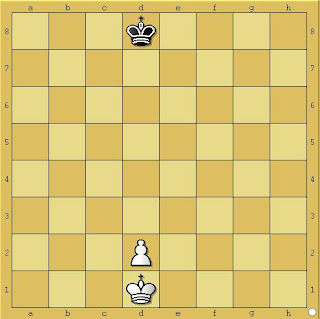Connecting endgame patterns by technique
I worked my way through the first 5 chapters of Silmans complete endgame course.
The scheme of this course is brilliant. It gives a logical order in studying the subjects. Unlike most endgame books, which mix material that you will never need in a lifetime with common used stuff. And Silman has resisted the temptation to straw with composed curiosities from Grigoriev indiscriminately. No distraction of differential calculations when you still strugle with the tables of multiplication. No exceptions before the common path is clear.
The material from the first four chapters I knew already very well, except for one or two minor topics. Chapter five consists of material that was either new to me or long forgotten.
Silmans claims that with mastering the first five chapters you can make do for the rest of your life. If you really don't want to spend any more time on it.
Of course I'm going to do the next chapters too. But his claim gives me the assurance that I can take a break from reading now and really make an effort first to really master the first five chapters.
The first step is to familiarize with all the patterns so I know them by heart. CT endgames is a good help for that since you can make a selection to filter the problems by material. That's just a matter of doing.
The crucial positions from Silmans book and as brought to me by CT endgames are just loose positions that don't seem to have a relation to each other. But that is not true, of course. Take for instance the following three positions:
We learn these patterns apart from each other. Yet they are the manifestations of the same principle: white must get his king in front of his pawn with preservation of the opposition. The fact that he grabs a pawn along the way is of little importance, except for the fact that the black pawn deprives the white king from two squares. It is not so much about recognizing an exact geometrical pattern, since the kings can be all over the place, but about how to use a little set of techniques like:
The next step will be to decompose complicated positions in elementary endgame building blocks. I suspect that the next chapters of Silmans book will cover that ground. But first things first: mastering all techniques from the first five chapters.
The scheme of this course is brilliant. It gives a logical order in studying the subjects. Unlike most endgame books, which mix material that you will never need in a lifetime with common used stuff. And Silman has resisted the temptation to straw with composed curiosities from Grigoriev indiscriminately. No distraction of differential calculations when you still strugle with the tables of multiplication. No exceptions before the common path is clear.
The material from the first four chapters I knew already very well, except for one or two minor topics. Chapter five consists of material that was either new to me or long forgotten.
Silmans claims that with mastering the first five chapters you can make do for the rest of your life. If you really don't want to spend any more time on it.
Of course I'm going to do the next chapters too. But his claim gives me the assurance that I can take a break from reading now and really make an effort first to really master the first five chapters.
The first step is to familiarize with all the patterns so I know them by heart. CT endgames is a good help for that since you can make a selection to filter the problems by material. That's just a matter of doing.
The crucial positions from Silmans book and as brought to me by CT endgames are just loose positions that don't seem to have a relation to each other. But that is not true, of course. Take for instance the following three positions:
 |
| diagram 1 white to move and win |
 |
| diagram 2 white to move and draw |
 |
| diagram 3 white to move and win |
- opposition
- outflanking
- triangulation
- outside passer
- square of the pawn
- draw tendencies of rook-pawns
- trebuchet
The next step will be to decompose complicated positions in elementary endgame building blocks. I suspect that the next chapters of Silmans book will cover that ground. But first things first: mastering all techniques from the first five chapters.
Interesting fact (good to know): knights cant win any tempos. So knight endings are sort of pawn endings, too, where the pawn ending principles are valid, too (triangulation, opposition, etc.).
ReplyDeleteIf you have bishop versus knight, then it is goog to know that you might win with tempo moves (but you have the disadvantage of only to be able attack pawns if they are on same color of the square like you bishop is).
I have started my training blog at http://hardroadtochessmastery.blogspot.in/ and have added a link to your blog. Hope that's fine. Your suggestions are welcome!
ReplyDelete